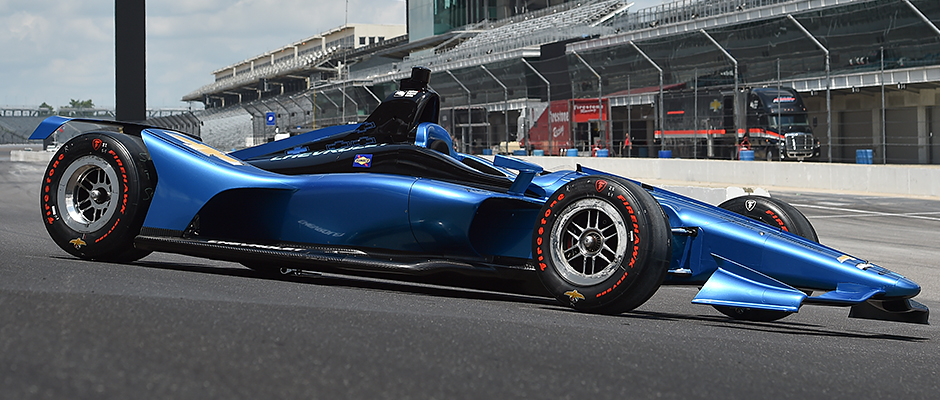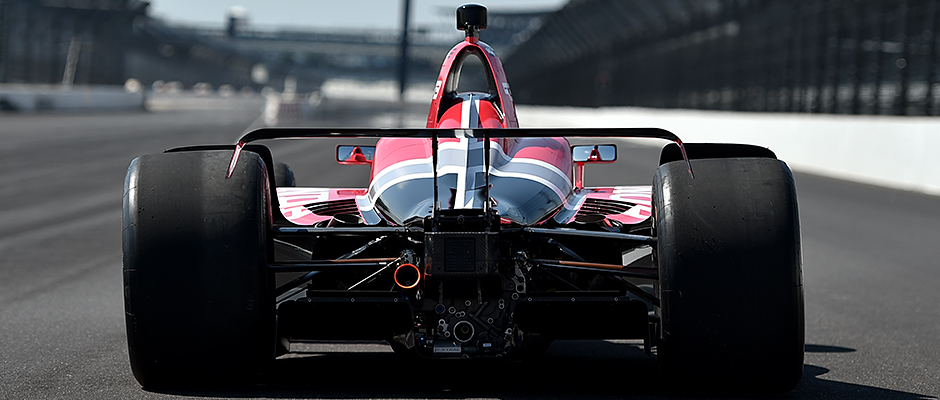INDYCAR president hopes new car opens new doors to competition
JUL 24, 2017
A new era of INDYCAR is officially under way.
A test of the new Verizon IndyCar Series universal aerodynamic bodywork kit that starts Tuesday is expected to provide a cheaper, sleeker and safer next generation of Indy car, INDYCAR’s President of Competition and Operations Jay Frye said Monday.
But it also could open doors to additional manufacturers and teams joining the series in the next three years.
“I would say we're closer (to adding additional manufacturers) because there were some hurdles that we had,” Frye said today in a national media teleconference following the release of photos of the cars that will participate in Tuesday’s test.
“Hopefully we've removed the hurdles, so there seems to be more enthusiasm about the direction, and they see our five-year plan, they see where we're going. That doesn't mean they're coming. It's just maybe there's now an opportunity that they could come.”

Testing begins Tuesday when Oriol Servia and Juan Pablo Montoya take to the Indianapolis Motor Speedway oval in cars fitted with the new kits. Testing continues – with Montoya in a Team Penske Chevrolet and Servia in a Schmidt Peterson Motorsports Honda – Aug. 1 at Mid-Ohio Sports Car Course, Aug. 10 at Iowa Speedway and Sept. 26 at Sebring International Raceway.
Manufacturers then will be supplied kits that can be used by their teams for testing. The kits are expected to be delivered to Verizon IndyCar Series teams in November, with team testing expected in January.
“Once we’re done with (the initial testing), then we give it to the manufacturers,” Frye said. “The manufacturers can then go test with their teams. After that, the teams will get their kits and they can go test. We’ve tried, like we did over the last year and a half (of planning the new kits) to have a process and a procedure that we go through. This is the first part of that.”
The universal kit will replace individual aero kits supplied by Honda and Chevrolet. Other original equipment manufacturers (OEMs) have been consulted about the change, with the hope that more will join because of the commonality and lowered expense of the kits.
“We made sure to let other OEMs who aren't currently our partners know what we're doing and ask for their opinion because we thought it certainly behooved us to show them where we're going and what we're doing before it came out, get their opinion on it,” Frye said. “... I think they see we're doing what we said we're going to do, and they like our direction. They like where we're going. Again, now we've just got to keep doing it.”

Frye also said he expects a significant reduction in annual costs to the teams.
“The annual cost will actually be 30 to 40 percent cheaper than what the current is now,” Frye said. “One of the things with having a universal car is we’re able to negotiate the term so the teams can plan for it. That’s very important. … The conversion cost didn’t end up being bad, and part of that is because we were able to do it over a three-year period.”
The sleeker, less-cluttered design is less top-heavy, with a 30 to 40 percent reduction in topside downforce and an increase in underside downforce.
“This car does have less overall downforce,” Frye said. “The downforce opportunity window is moved down. Obviously as the teams start running the car, they’ll get better and better.”
The new kit also is designed for the possibility of adding a windscreen to help deflect debris for added driver protection, Frye said.
“We’re definitely conscious of (the possibility of a windscreen being added to the kit in the future),” Frye said. “We’re conscious of how it will affect the car aesthetically, we’re conscious of the safety piece. Some of the things that have gone on with some other (series’) testing, hopefully we’re already ahead of that and already aware of some of the issues that could come with the testing. When we put it on, we want to make sure we’ve got it right.”
The project is led by Frye; Bill Pappas, INDYCAR’s vice president of competition/race engineering; Tino Belli, INDYCAR’s director of aerodynamic development; and Dallara, the supplier of the IR-12 chassis that has been used by teams since 2012 and supplier of the universal kit.
Fans can watch Tuesday’s test, which is scheduled from 9 a.m. to 5 p.m. ET, from the Indianapolis Motor Speedway Museum parking lot, the Turn 2 viewing mounds and the South Terrace grandstands. A second day of testing is scheduled for Wednesday if needed.






















